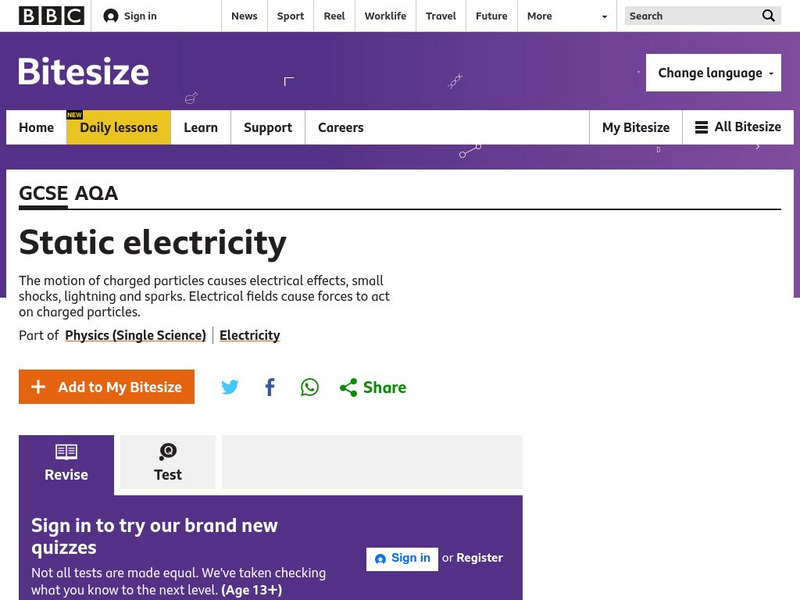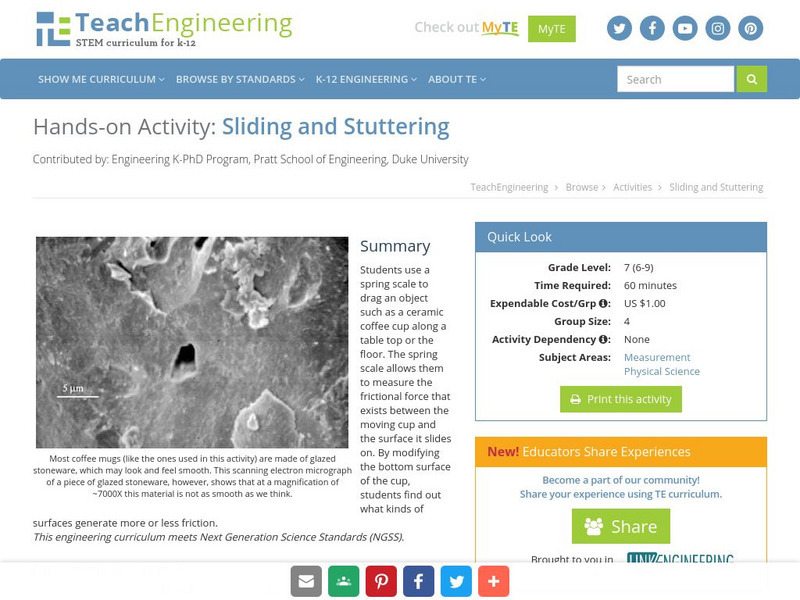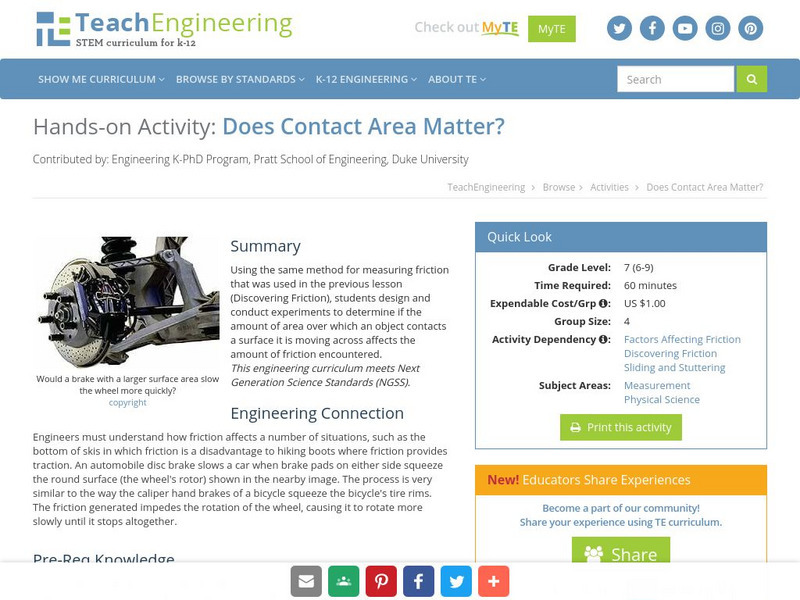Hi, what do you want to do?
TeachEngineering
Teach Engineering: Discovering Friction
With a simple demonstration activity, young scholars are introduced to the concept of friction as a force that impedes motion when two surfaces are in contact. Then, in the Associated Activity (Sliding and Stuttering), they work in teams...
Sophia Learning
Sophia: Mathematical Interpretation of Static Friction: Lesson 2
This lesson gives a mathematical interpretation of static friction. It is 2 of 2 in the series titled "Mathematical Interpretation of Static Friction."
Sophia Learning
Sophia: Static Friction & Surface Area: Lesson 2
This lesson explains why static friction does not depend on the contact surface area between an object and the surface that object is resting on. It is 2 of 2 in the series titled "Static Friction & Surface Area."
Sophia Learning
Sophia: Common Coefficients of Static Friction: Lesson 2
This lesson provides the learner with the coefficients of static friction for some common surfaces. It is 2 of 2 in the series titled "Common Coefficients of Static Friction."
Science Buddies
Science Buddies: Rubbing Up Against Static Electricity
A tried and true balloon activity is to rub a balloon on your head to make your hair stand up. Learn how the rubbing builds up static electricity using this experiment to see if the number of rubs makes a difference.
TeachEngineering
Teach Engineering: Sliders (For High School)
In this hands-on activity, students learn about two types of friction - static and kinetic - and the equation that governs them. They also measure the coefficient of static friction and the coefficient of kinetic friction experimentally.
TeachEngineering
Teach Engineering: Sliders
In this hands-on activity, students learn about two types of friction - static and kinetic - and the equation that governs them. They also measure the coefficient of static friction experimentally.
New York University
New York Univ.: Tandon School of Engineering: Static and Kinetic Friction [Ppt]
Explains what static and kinetic friction are and discusses the coefficient of friction for different situations. Presents two simple lab experiments and real-life examples of friction in action.
Physics Aviary
Physics Aviary: Practice Problems: Newton's Law System Both Frictions Problem
Students must find out different things for a series of object's moving as a system with Friction. In this problem students will be given both a static friction coefficient and a kinetic friction coefficient.
CK-12 Foundation
Ck 12: Friction
[Free Registration/Login may be required to access all resource tools.] In this module, students learn what causes friction, what factors affect friction, and how it is calculated.
TeachEngineering
Teach Engineering: The Force of Friction
In the first of two lessons of this curricular unit, students are introduced to the concept of friction as a force that impedes motion when two surfaces are in contact. Student teams use spring scales to drag objects, such as a ceramic...
TeachEngineering
Teach Engineering: Factors Affecting Friction
In this lesson, students use previous knowledge about friction to formulate hypotheses concerning the effects of weight and contact area on the amount of friction between two surfaces. In the Associated Activities (Does Weight Matter?...
CK-12 Foundation
Ck 12: Physics Simulation: Sprinter
[Free Registration/Login Required] Learn about static friction, kinetic friction, and slipping in the context of human motion using this interactive simulation. A PDF worksheet and a video tutorial are also available. [3:38]
Physics Classroom
The Physics Classroom: Static Electricity: Lesson 2: Charging by Friction
Understand how to electrically charge an object by friction with this detailed description. Classrooms will benefit by extending the lesson with the interactive opportunity and follow up for comprehension with the "Check Your...
CK-12 Foundation
Ck 12: Physical Science: Static Electricity and Static Discharge
[Free Registration/Login may be required to access all resource tools.] What static electricity and static discharge are, and how lightning occurs.
CK-12 Foundation
Ck 12: Episd: Force Coefficients
[Free Registration/Login may be required to access all resource tools.] Understand the effects of magnitude of force pairs between objects. Know the differences between kinetic and static friction.
BBC
Bbc: Gcse Bitesize: Static Electricity
This lesson focuses on static electricity, including how particles can be charged by friction, and electrical forces and why they repel or attract each other. Includes a link to a test.
Science4Fun
Science4 Fun: What Is Friction
What is friction? Illustrated discussion of friction including the three types, its importance, and why it is avoided.
TeachEngineering
Teach Engineering: Sliding and Stuttering
Students use a spring scale to drag an object such as a ceramic coffee cup along a table top or the floor. The spring scale allows them to measure the frictional force that exists between the moving cup and the surface it slides on. By...
American Association of Physics Teachers
Com Padre Digital Library: Open Source Physics: Sliding Down an Incline Plane
Here is a simulation demonstrating an object placed on an inclined plane. The user will vary the slope of the plane to see the relationship the slope has on the gravity of the object and the static friction.
TeachEngineering
Teach Engineering: Does Contact Area Matter?
Using the same method for measuring friction that was used in the previous lesson (Discovering Friction), students design and conduct an experiment to determine if the amount of area over which an object contacts a surface it is moving...
TeachEngineering
Teach Engineering: Energy of Motion
By taking a look at the energy of motion all around us, students learn about the types of energy and their characteristics. They first learn about the two simplest forms of mechanical energy: kinetic and potential energy, as illustrated...
Physics Classroom
The Physics Classroom: Static Electricity Review
This review from the Glenbrook South High School provides a series of questions on various topics associated with static electricity (such as electrical insulation). Answers and explanations are hidden, yet easily accessed from within a...
Other
Eds Journal: The Control of Risks From Static Electricity
From the ESD Journal website. This page describes the industrial and medical risks associated with the buildup of static charge. The investigation of the electric potential created by such accumulated charges and the materials...





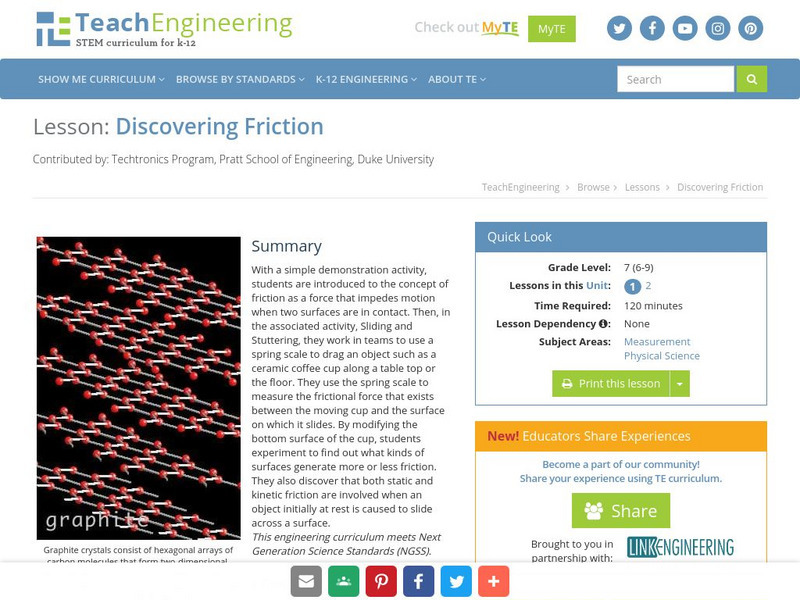
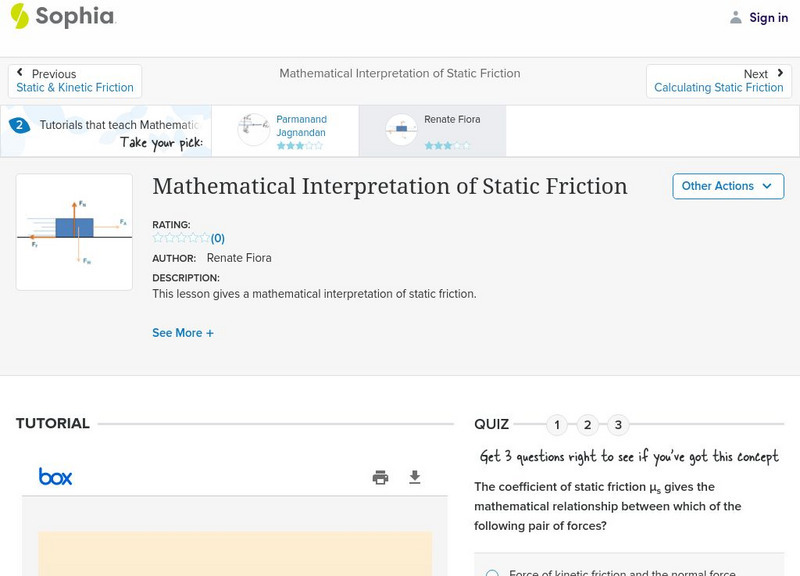

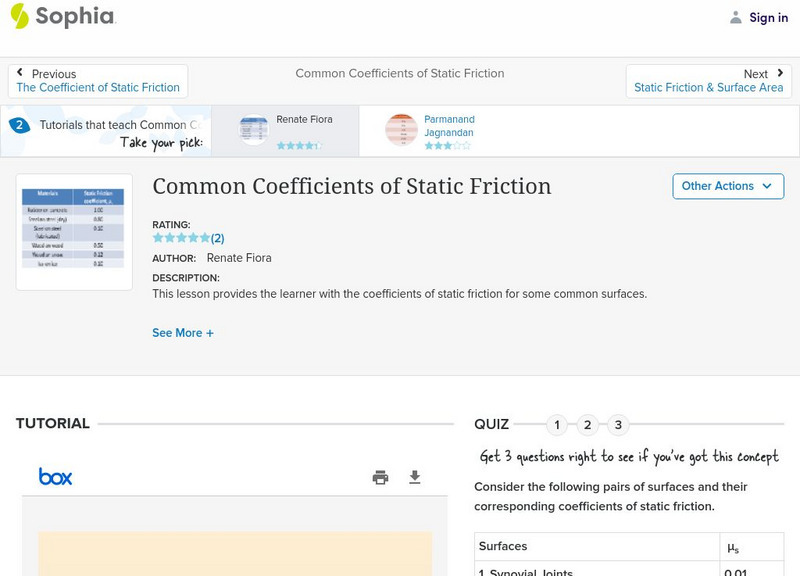
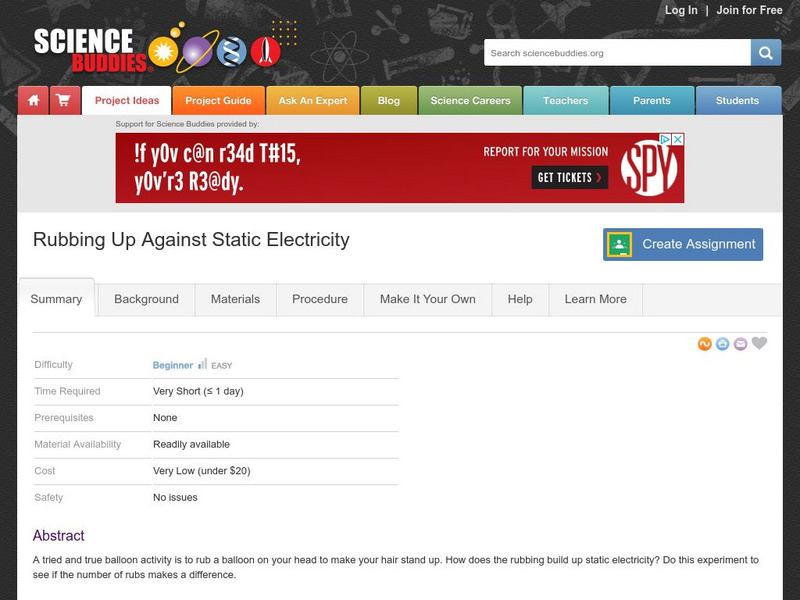
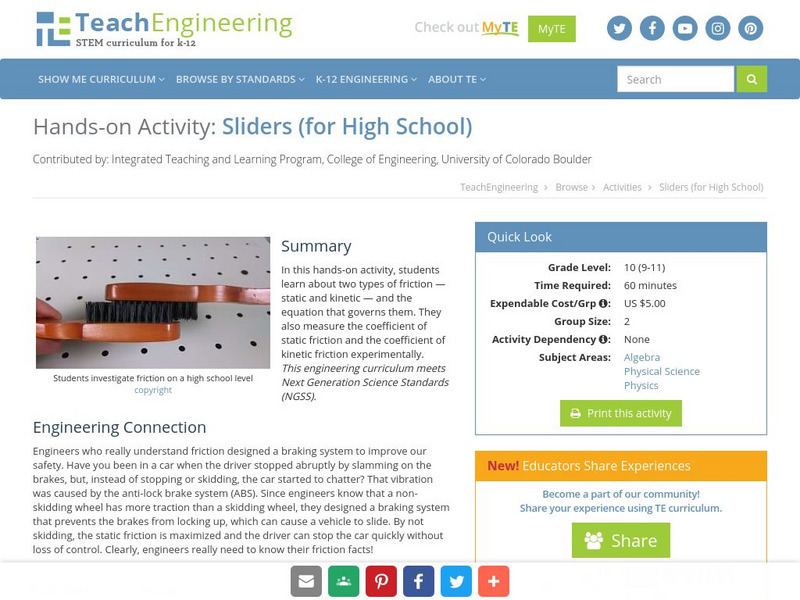
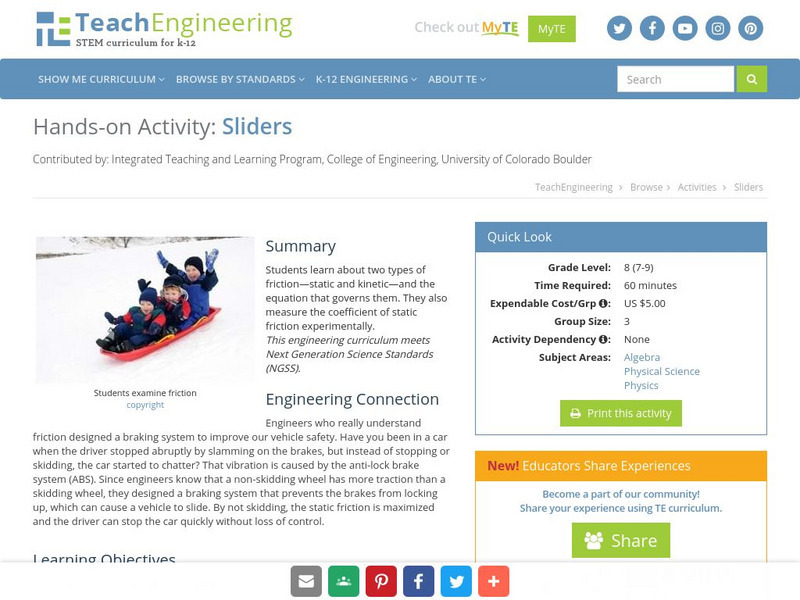
![New York Univ.: Tandon School of Engineering: Static and Kinetic Friction [Ppt] PPT New York Univ.: Tandon School of Engineering: Static and Kinetic Friction [Ppt] PPT](https://static.lp.lexp.cloud/images/attachment_defaults/resource/large/FPO-knovation.png)





